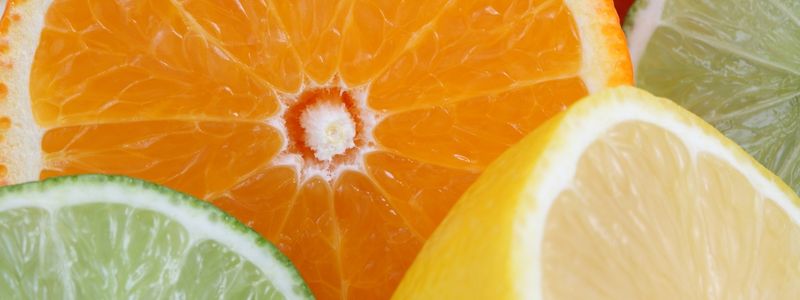How to Develop a Gut Health Food Plan with the 5R Protocol
Are you trying to help your patients heal chronic gut inflammation but don’t know where to start? Our Gut Health Food Plan provides a blueprint for creating personalized plans to address each patient’s specific needs.
Read on to learn how you can develop a Gut Health Food Plan to address gut inflammation, alleviate symptoms, and improve outcomes.
Focus: Introducing the 5R Protocol
This plan utilizes the 5R protocol to improve general gut health among patients: Remove, Replace, Reinoculate, Repair, and Rebalance.
Phase 1: Remove
The first step to the 5R protocol is to remove known gut irritants and “triggers”, including known food sensitivities, food allergies, and intolerant foods. Be aware that food sensitivities or allergies may be “hidden” or “undetected”.
If SIBO (Small Intestinal Bacterial Overgrowth) is suspected, consider avoiding high FODMAP foods (foods high in fermentable carbs).
Also, remember that personalizing the food plan to remove other potential triggers, such as lectins, histamines, salicylates, grains, and others, is essential.
Phase 2: Replace

The second step in the protocol is to replace or find alternatives for digestive support (if applicable). Consider including bitters and apple cider vinegar in the patient’s diet to help digestion along.
Other foods that support digestion are:
- Potatoes (white, purple)
- Artichokes
- Beets
- Kale
- Lemon
- Lime
- Flaxseed
- Turmeric
- Aloe Vera
Phase 3: Reinoculate
 The third step in the protocol is to reinoculate the gut with prebiotic and probiotic-rich foods and a diverse diet to improve the diversity of the microbiome.
The third step in the protocol is to reinoculate the gut with prebiotic and probiotic-rich foods and a diverse diet to improve the diversity of the microbiome.
Some foods that are good sources of prebiotics and probiotics are:
- Kefir/yogurt
- Eggplant
- Garlic
- Onion
- Okra
- Tomato
- Apple
- Blackberries
- Beans (black, kidney, mung. etc.)
- Rice
- Quinoa
- Kimchi
- Sauerkraut
- Kombucha
Phase 4: Repair

The fourth step is to repair the gut lining and any gut damage (inflammation, immune, etc.).
Foods that support the Repair phase include:
- Cabbage (green, red)
- Collagen peptides
- Whey protein
- Turmeric
- Aloe Vera
- Bone broth
Phase 5: Rebalance

The final step in the protocol is to rebalance the nervous system and the gut by focusing on healthy lifestyle interventions such as stress management, sleep, and more.
What to Remove from the Diet
In addition to following the 5R protocol, your patient should also eliminate the following to heal the gut:
- Gluten/wheat and any other food triggers. The most common include cow milk, eggs, soy, fish, shellfish, peanuts, or tree nuts.
Uncovering Food Sensitivities
Avoid foods that trigger an immune response. Consider food sensitivity and allergy testing to determine a patient’s immune reaction to foods. Common food sensitivities include the “Top 8”:
- Gluten/wheat
- Cows milk
- Eggs
- Soy
- Fish
- Shellfish
- Peanuts
- Tree nuts
Keep in mind that there may not always be an immediate/noticeable immune reaction to allergens. It’s common to have sensitivities or allergies to foods at low levels that cumulatively cause a significant immune response and can harm multiple body systems over time.
Additional Guidelines for Healing the Gut
Choose Organic
Choose organic, non-GMO foods to minimize exposure to environmental pesticides, herbicides, and fungicides. Also, reduce other toxins that may be found in food, such as BPA lining on cans, plastic packaging, etc.
Eat the Rainbow
Emphasize colorful foods to increase antioxidants, phytonutrient compounds, and diversity in the diet.
Optimize Nutrients
Optimize the nutrients in food by focusing on specific preparatory & cooking methods such as:
- Soaking and sprouting grains, legumes, nuts, and seeds
- Steaming
- Braising
- Baking & roasting (avoid high heat)
- Pressure cooking (particularly for legumes)
Test Considerations
Vibrant Wellness tests to consider to determine a patient’s immune reactions to food include:
- Food Zoomers
- Wheat
- Corn
- Grain
- Soy
- Egg
- Dairy
- Lectins
- Seafood
- Mammalian Milk
- Peanut
- Nuts
- IgA+IgG Food Sensitivities
- IgG4 + C3D Food Reactions
- IgE Allergies testing
- Gut Zoomer
- IBSSure
- Organic Acids panels
Combining these nutritional strategies with advanced food sensitivity and wellness testing can help your patients resolve gut inflammation faster to feel their best.
Learn more about how our advanced, precision food sensitivity and wellness tests can improve patient outcomes.
Access the downloadable PDF of the full Gut Health Food Plan.
 By
By


